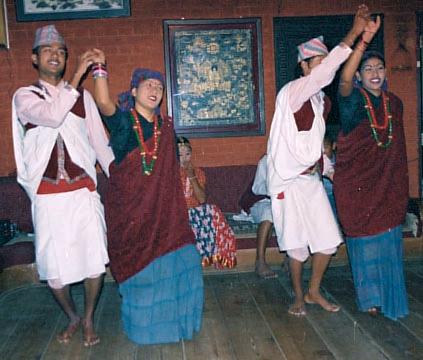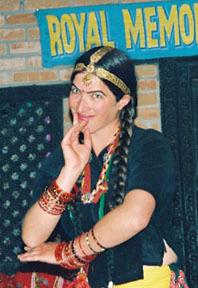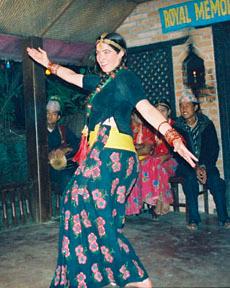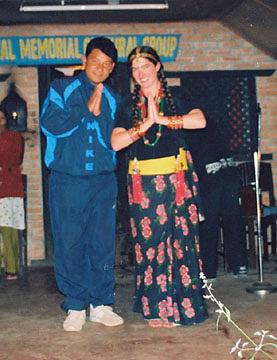
 My World Travel
My World Travel
 Album a pic per frame
Album a pic per frame

|
A Cultural Evening: NEPAL Dances of Nepal change a little bit from landscape to another. Each domestic ethnic group has its special dress, a slight variation in the music and dance. Most of the folk dances will tell stories of everyday life in the village and local traditions: a young girl's search for love, marriage rituals, and dance of war, harvesting and more. It is said that those dances originated on the Himalayas, the abode of Shiva, who is the patron of Tandava dance- the heart of Indian and Nepali dance, the maker and source of rhythm of the universe. I met this charming dance in the lakeside of Pakhara. On Lakeside Street you will find many shopping places: Tibetan crafts, Nepali music, tailors that will stitch a memory on a t-shirt of make a dress-to-order and more. Between them and bistros for international foods along side with Nepali cuisine restaurants. Those also offering a Nepali cultural evening. Here is a selected e-mail from December 22nd, when the adventure were spanking new: Namaste!
The program is two hours. The dances are variety of stories from the Nepali culture, with live music as escort and also to fill the gaps between dances. The last dance is shared with the audience: the dancers invite all the dining guests to go on stage and dance together. Here is a glance at "Royal Memorial Cultural Group" performance at Boomerang Restaurant, Lakeside, Pokhara.
Today there is a need to preserve the traditional dance forms*. Unfortunately, there is not enough enthusiasm and not enough funds to include folk dance in the schools' extra curricular activities. Watching a cultural show such as "Royal Memorial Cultural Group" is a good deed and a support in keeping this dance alive. One contributor for this art of dance is Navinson Shrestha (on the percussion). In the morning he teaches Nepali dance in a local school in Pokhara, and then rushed to teach in a collage. He is also a dance director for filmmaking and has a lot of passion and information about Nepali dance. For Two weeks Navinson found eighty minutes, before the cultural evening, to teach me Nepali two folk dances. One of the dances, "Sunko Vauo Sumtala", is about the season of orange harvesting, when a girl selling those golden fruits and hoping that the next man to come for oranges is the one to build her future home, that will be full of happiness and rich like the golden oranges… The second dance is a teenager girl being in love. She is dressed so nice, with a wonderful blouse and a lovely shawl, ready for her lover to come. The recorded music is of a famous and much-loved Nepali singer, Kunti Muktan.
This is my story of how I met a wonderful culture in a breathtaking country, where I also found my life partner
* a link to a newspaper article
|











